Looking for a few tips and tricks to grow a delicious and bountiful harvest of sweet red peppers in your garden?
For one reason or another, when it comes to growing peppers, sweet red peppers always prove to be the one pepper variety gardeners struggle with the most.
For some, it is simply trying to get their pepper plants to flower and produce fruit. But for many others, the real difficulty lies in trying to get their peppers to finally turn from bright green to the deep red color that signals they are ready for harvest – and for delicious eating!
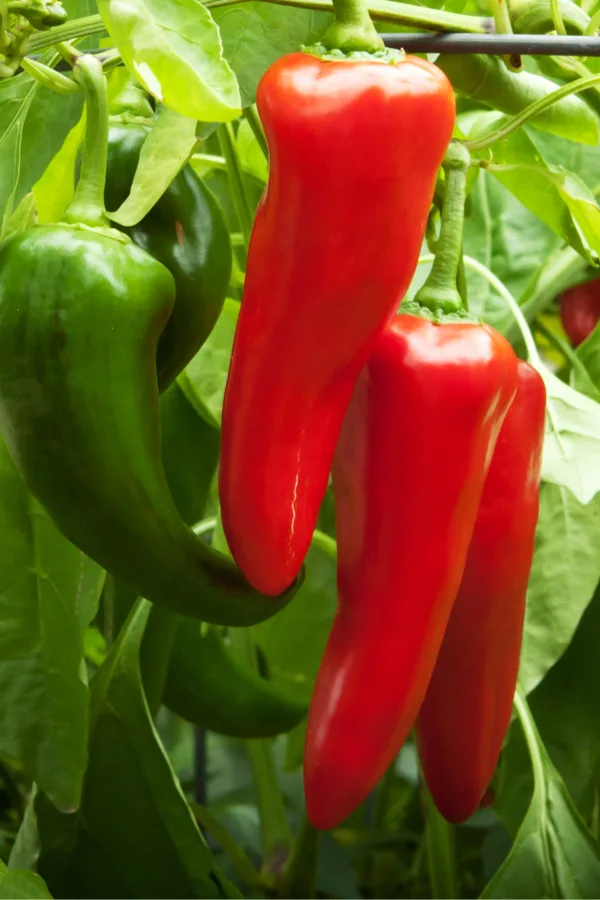
One thing is for sure, whatever the issue, red peppers can certainly be finicky to grow. But there is good news – most of the problems associated with growing these deliciously tasty peppers are quite easy to solve. Especially when it comes to that problem of getting them to turn red!
With that in mind, here is a look at the simple secrets to success when planting and growing red peppers – and how to get them to ripen to the perfect shade of red with ease!
How To Grow Sweet Red Peppers With Success
Let The Soil Warm
Red peppers, just like green peppers, prefer warm soil for optimum growth. If your pepper transplants go into the ground too early in the season and the soil is still cool, it can and will create a whole host of issues for the plant.
For starters, planting in cool soil can stunt the growth of both the roots and the plant. Not only can this lead to weak plants, it will decrease flowering and future harvest totals as well. Even worse, if the soil is too cool, it can lead to root rot and actually kill the plant.
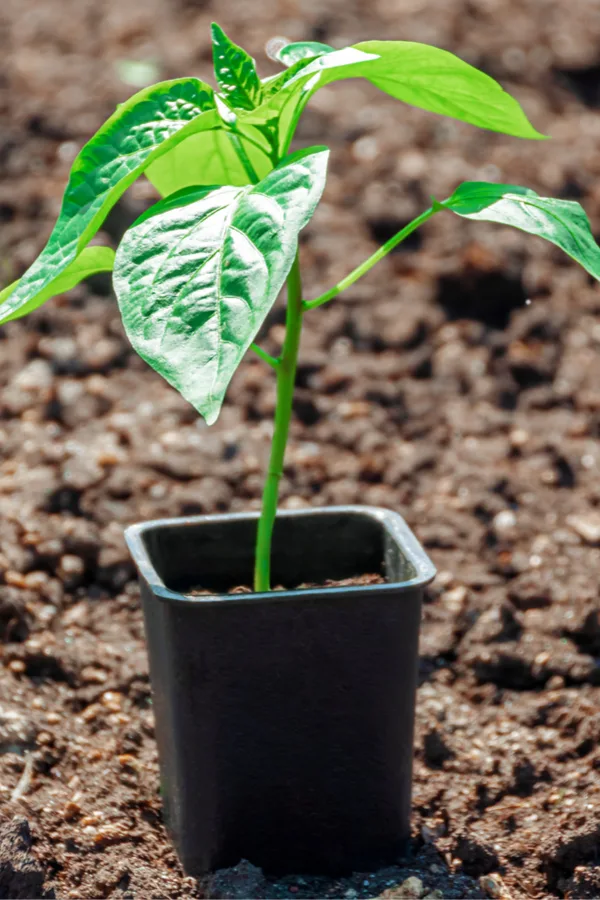
Allow your soil temperature to warm to at least 60 degrees before planting. In addition, mulch your plants to help conserve both moisture and heat in the soil in early summer. That mulch will also help regulate the soil from getting too warm later in the summer, helping the crop even more.
Fill Your Planting Hole With Power
In addition to warm soil, sweet red peppers need a rich, nutrient-filled medium to grow strong and healthy. When planting, amend your planting holes with a 50/50 mix of compost and garden soil. This will help to loosen the soil and provide a steady supply of nutrients to your young plants.
But don’t stop there! Adding in three or four crushed eggs shells into the planting hole, along with a quarter cup of worm castings will also enrich the soil for better health and growth.

The egg shells will help prevent blossom end rot by supplying plants with additional calcium. Meanwhile, the worm castings provide a slow-release, easy to absorb nutrient source for the peppers root to soak in.
Together, the two additional ingredients only enhance your chances of growing a big harvest of juicy sweet red peppers.
#2 Allow Space For Your Plants – How To Grow Sweet Red Peppers
Want your peppers to ripen faster than ever? Then give them plenty of space! The more sun, air and circulation your pepper plants can get, the faster and more evenly they will ripen.
Sunlight and oxygen both help to power your plant and ripen fruit. In addition, as air circulates through the plant, it helps ripen fruit as well. This is important for keeping disease, mold and mildew all at bay.
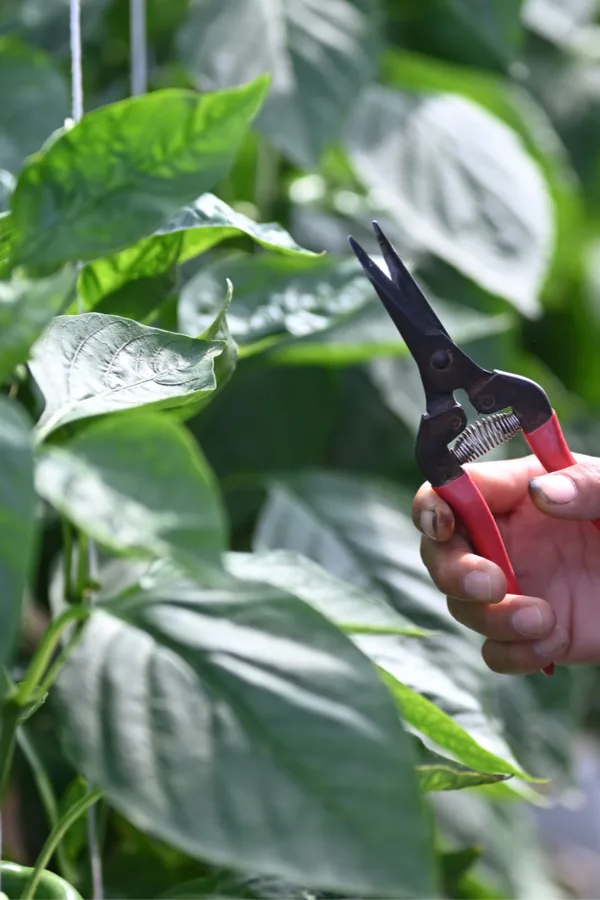
For large, sweet red pepper plants, leave at least twenty-four inches between plants to allow light and air in. The more you crowd your plants, the longer it will take for your peppers to ripen and turn red.
Furthermore, don’t be afraid to prune your pepper plants as they grow a bit. Clear out the bottom branches to allow air in, and remove a few middle stems to let air and light through the middle. See : How & Why To Prune Pepper Plants
Provide Support When You Plant
When planting, make sure you provide support for your peppers in the way of stakes or cage. As peppers mature on the plant, they can grow quite heavy. This puts a lot of stress on the branches, and it can cause them to break off quite easily.
It can be quite deflating to have beautiful peppers on your plants, only to watch them get ruined when a limb breaks off.
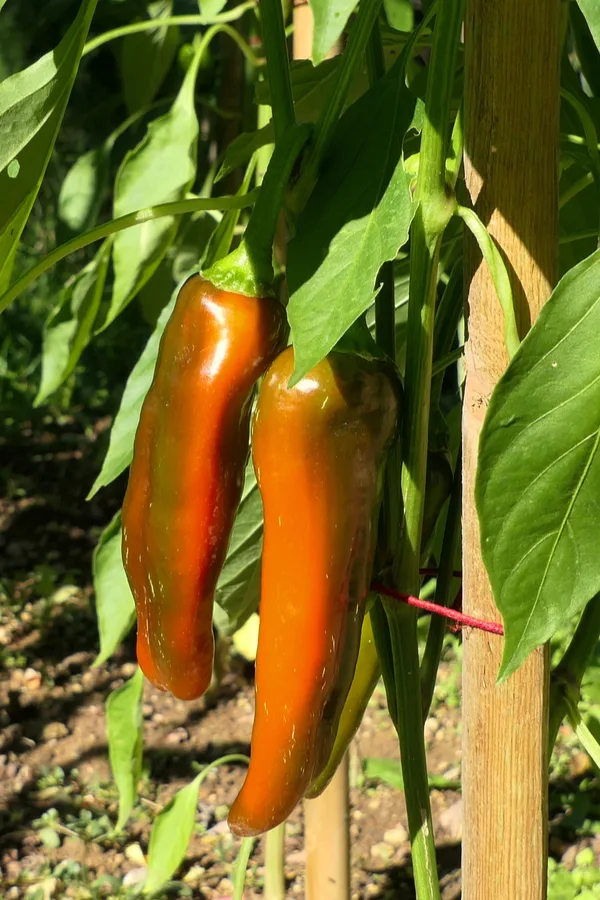
Why put the supports in when planting? For starters, it provides early protection for your plants from spring storms. But even more, if you drive stakes or cages in later, you can easily damage the roots under the soil, which in turn can damage the plant.
One final note on planting – always mark your red pepper plants! It can be quite easy to forget which peppers are green, and which might be sweet red peppers. That can lead to harvesting fruit from your red peppers way too early!
#3 Fertilize, But Don’t Over-Fertilize
It is true that red peppers need a good supply of nutrients to grow and produce. But too many nutrients can actually cause the plant to concentrate on new foliage and bloom growth, and not on ripening peppers.
Fertilize young plants with an organic fertilizer or compost tea a few times early in the growing season. But once fruit appears, it is time to back off.
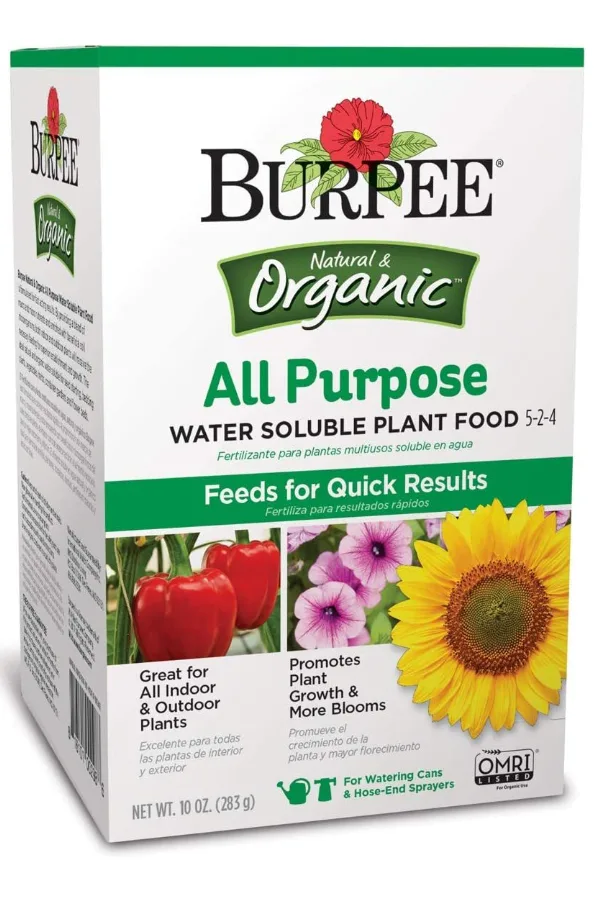
A good rule of thumb is an application every four weeks after they have been planted for a total of 2 or 3 applications. Then, stop fertilizing and let the pepper plant produce.
Water Well
Without proper moisture in the soil, pepper plants will delay their ripening process. Lack of water can also lead to less-robust fruit. One of the biggest reasons many red pepper plants never reach their full potential is simply a lack of adequate water.
Sweet red pepper plants should be receiving around 1 to 1-1/2 inches of rainfall or water each week. If you are experiencing a dry spell, keep plants watered to keep production and ripening on schedule. See: 5 Simple Secrets For Watering Vegetable Plants
Be Patient – How To Grow Sweet Red Peppers
It is important to note that getting red peppers to turn red still requires a bit of patience. They will and do take longer to turn from green to red and full maturity than green peppers.
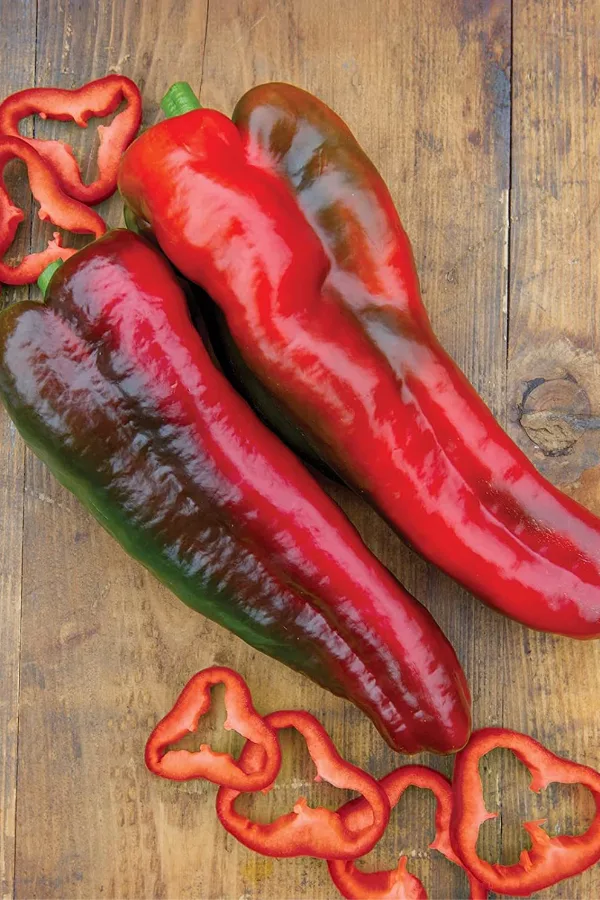
Unfortunately, the maturity dates on packets are referring to producing peppers, and not always about the peppers turning red or maturing. Once you see the first green peppers appear on a red pepper plant, it can often take three to four more weeks for them to begin to ripen to full red.
This is true especially early on in the growing season. Once the first peppers begin to turn, you will notice newer peppers turning red more quickly.
Grow Tried & True Sweet Red Pepper Varieties
Finally, be sure to select proven, high quality red pepper varieties when planting. Although the traditional sweet red bell pepper is quite popular in the grocery store, it is not the only choice for the home garden when it comes to sweet red peppers.
Heirloom varieties like Marconi Red Pepper and Thunderbolt Red Italian Roaster are both excellent home garden red peppers. They produce huge peppers with big flavor, and they keep doing so right up until the first frost.
Seed Links :
Here is to growing a bumper crop of sweet red peppers in your garden this year – and getting them to turn to a beautiful red for harvesting!
Follow Our Facebook Page For Great Gardening Tips And Advice! This Is My Garden Facebook Page
This Is My Garden is a garden website created by gardeners, for gardeners. Jim and Mary Competti have been writing gardening, DIY and recipe articles and books and speaking for over 15 years from their 46 acre Ohio farm. They publish three articles every week, 52 weeks a year. Sign up today to follow via email, or follow along!
